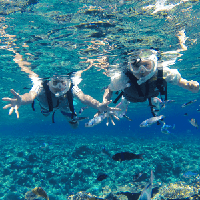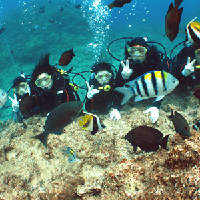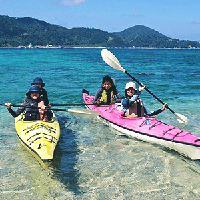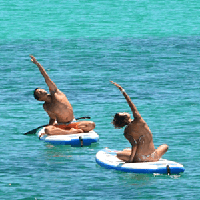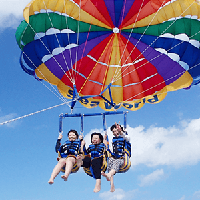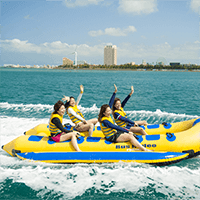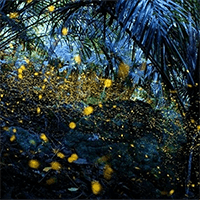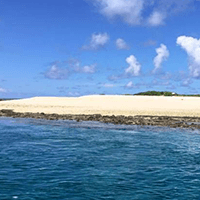Hyogo in City walking tour
- Age 1~Age 70
- Over 6 hours on the day
- 10:30 / 11:30
Winter time: 10/16~5/14Summer time: 5/15~10/15~Schedule for the day~Winter time: 10:30 ▼Meet at Nihonbashi Exit 2 12:00 ▼Kobe Port/Mosaic Ferris Wheel (free time to explore/lunch on your own/approx. 2.5 hours) 14:30 ▼Kitano Foreigners' Houses (approx. 1 hour) 16:30 ▼Arima Onsen (free time to explore/approx. 1.5 hours) 18:00 ▼Mt. Rokko/night view (approx. 1.5 hours) 19:30 ▼Tour ends. 20:30 ▼Disband at Nihonbashi Exit 2Summer time: 11:30 ▼Meet at Nihonbashi Exit 21:30 ▼Kobe Port, Mosaic Ferris Wheel (free time, lunch on your own/approx. 2.5 hours)20:30 ▼Kitano Ijinkan-gai (approx. 1 hour)21:30 ▼Arima Onsen (free time, approx. 1.5 hours)20:30 ▼End of tour. 21:30 ▼Disband at Nihonbashi Exit 2▼Night view of Mt. RokkoMt. Rokko is near Kobe. The mountainous area is designated as Setonaikai National Park. It is a great place to enjoy the night view of Kobe, and is said to be one of the three best night views in Japan. ▼Recommended games:▼Kazamidori House (Admission fee: 500 yen, Combined ticket with Moegisha: 650 yen) Kazamidori House is the symbol of Kitano Ijinkan and is designated as an Important Cultural Property of Japan. In addition to its stable and stately architectural features, the internal structure is also worth seeing. The architect incorporated early 20th century Art Nouveau elements, making the whole house very luxurious, elegant, lively and comfortable. ▼Moegikan (Self-paid admission ticket 350 yen, Combined ticket with Kazamidori House 650 yen) Moegikan was the private residence of Hunter Sharp, the American Consul General in Kobe during the Meiji period. Moegi was named after the color of the exterior walls. The walls of each room are painted in a different color, and the fireplaces are also different colors, which is very impressive. It is designated as an Important Cultural Property. From the second floor of Moegikan, you can see the beautiful cityscape of Kobe. ▼ Gyorin-no-Yakata (Admission fee: 1,050 yen, actual cost) This is the first foreign-style house to open in Kobe, and was named after the natural stone slabs covering the exterior walls, which look similar to fish scales. It is designated as a registered tangible cultural property of the country and has been selected as one of the "100 Best Houses in Hyogo." This is a mixed tour, and participants come from all over the world.
全体的にはよかったのですが、夕方の六甲山がただ景色見て終わりで時間が余り過ぎてもったいないと思いました。50〜60分位何もせず駅やバスのイスに座ってるだけで、時間のロスだと思いました。 だったら直前の有馬温泉の時間を長くとってくれるか、早めに神戸市内戻って車窓観光してくれたらいいのに、と思いました。 ガイドさんは優しくてよかったです。
- Age 1~Age 70
- Over 6 hours on the day
- 10:30 / 11:30
Winter time: 10/16-5/14Summer time: 5/15-10/15~Schedule for the day~Winter time: 09:30-10:30 ▼Pick up/drop off/transfer from hotel/B&B 12:00 ▼Kobe Port/Mosaic Ferris Wheel (free stroll/lunch on your own/approx. 2.5 hours) 14:30 ▼Kitano Foreigners' Houses (approx. 1 hour) 16:30 ▼Arima Hot Springs (free stroll/approx. 1.5 hours) 18:00 ▼Mt. Rokko/night view (approx. 1.5 hours) 19:30 ▼Tour ends. 20:30 ▼Pick up/drop off/transfer to hotel/private innSummer time: 10:30-11:30 ▼Pick up/drop off/transfer to hotel/private inn13:00 ▼Mosaic Ferris Wheel at Kobe Port (free time to explore/lunch on your own/approx. 2.5 hours)15:30 ▼Kitano Ijinkan-gai (approx. 1 hour)17:30 ▼Arima Onsen (free time to explore/approx. 1.5 hours)19:00 ▼Night view of Mt. Rokko (approx. 1.5 hours)20:30 ▼Tour ends. 21:30 ▼Pick up/drop off/transfer to hotel/private inn▼Night view of Mt. RokkoMt. Rokko is located near Kobe. The mountainous area is designated as Setonaikai National Park. It is a great place to enjoy the night view of Kobe, and is said to be one of the three best night views in Japan. ▼Recommended games:▼Kazamidori House (Admission fee: 500 yen, Combined ticket with Moegisha: 650 yen) Kazamidori House is the symbol of Kitano Ijinkan and is designated as an Important Cultural Property of Japan. In addition to its stable and stately architectural features, the internal structure is also worth seeing. The architect incorporated early 20th century Art Nouveau elements, making the whole house very luxurious, elegant, lively and comfortable. ▼Moegikan (Self-paid admission ticket 350 yen, Combined ticket with Kazamidori House 650 yen) Moegikan was the private residence of Hunter Sharp, the American Consul General in Kobe during the Meiji period. Moegi was named after the color of the exterior walls. The walls of each room are painted in a different color, and the fireplaces are also different colors, which is very impressive. It is designated as an Important Cultural Property. From the second floor of Moegikan, you can see the beautiful cityscape of Kobe. ▼ Gyorin-no-Yakata (Admission fee: 1,050 yen, actual cost) This is the first foreign-style house to open in Kobe, and was named after the natural stone slabs covering the exterior walls, which look similar to fish scales. It is designated as a registered tangible cultural property of the country and has been selected as one of the "100 Best Houses in Hyogo." This is a mixed tour, and participants come from all over the world.
- Age 1~Age 70
- Over 6 hours on the day
- 10:30 / 11:30
〜Schedule〜(Note: Winter time: 10/16-5/14. Summer time: 5/15-10/15)1. Winter time [09:30-10:30] ▼Pick up/drop off/drop off at hotel/private inn, hotel/private inn on Osaka Loop Line [10:30] ▼Nihonbashi Station Exit 2 (Namba-Shinsaibashi area) [12:00] ▼Kobe-Sanda Premium Outlets (free walk/lunch on your own/about 4 hours; not going to Kitano Ijinkan-gai and Kobe Port) [16:30] ▼Arima Onsen (about 1.5 hours, free time) [18:00] ▼Night view of Mt. Rokko (about 1.5 hours, cable car fare at your own expense)If the cable car is not in operation due to weather or other force majeure, the bathing time in Arima Onsen will be extended. [19:30] ▼The tour ends at a hotel in the Shinsaibashi/Dotonbori area or Osaka city. 【20:30】 ▼Disband at the meeting pointDisband 2, Summer time【10:30-11:30】 ▼Pick up/drop off/pick up at hotel/private inn, hotel/private inn on Osaka Loop Line【11:30】▼Nihonbashi Station Exit 2 (Namba-Shinsaibashi area)【13:00】▼Kobe-Sanda Premium Outlets (free walk/lunch on your own/about 4 hours; not going to Kitano Ijinkan-gai and Kobe Port)【17:30】 ▼Arima Onsen (about 1.5 hours, free time)【19:00】 ▼Night view of Mt. Rokko (about 1.5 hours, cable car fare at own expense)If the cable car is suspended due to weather or other force majeure, the bathing time in Arima Onsen will be extended. 【20:30】 ▼The tour ends at a hotel in the Shinsaibashi/Dotonbori area or Osaka city. [21:30] ▼Disband at the meeting point▼ Kobe Mita Outlet Operated by the famous American outlet group Chelsea, it is built in the style of Pasadena, a high-end residential area on the outskirts of Los Angeles. It is an outlet that sells mid-to-high-end products. Mita Outlet boasts a beautiful environment and convenient transportation. There are about 180 famous domestic and international brand stores selling fashion apparel, clothing and miscellaneous goods, sports goods, interior goods, etc. The brands range from high-end luxury brands to affordable luxury brands, such as Anna Sui, Folli Follie, Furla, Abahouse, Balenciaga, Bottega Veneta, Chloe, Givenchy, Gap, Issey Miyake, etc. Children will not be bored even if they come here. There is also a Lego store inside the outlet. While parents are shopping, children can also buy the toys they want. *Tourists can exchange passports and coupons at the information center. There is also an AEON Mall next to Mita Outlet, which has many restaurant and shopping options. This is a shared tour and participants come from all over the world.
- Age 20~Age 99
- 3~4 hours
- 13:00
Nadagogo, Japan's number one sake brewery, is a mecca for sake lovers, where you can enjoy free tours and tastings of more than 10 sake breweries. Sake breweries gather along the Hanshin Railway lines, and the roads are flat, making it perfect for walking around town.If you come to Kansai, please try it once. Sake made from high-quality sake rice (Yamada Nishiki) suitable for sake brewing and high-quality underground water rich in minerals. This is a tour around Nada, which has prospered as a famous sake production area since the Edo period because of its port.・A walking tour of Japan's No. 1 sake brewery, Nada Sake Brewery・Please try this tour where you can learn trivia, history, manufacturing process and more.・10 free tastings included, so be careful not to drink too much.
- Age 12~Age 99
- 1~2 hours
- 10:00
About 150 years ago, along with the opening of the port of Kobe, the foreign settlement was established as a residence and workplace for foreigners. Please take a stroll through the exotic streets filled with retro buildings from the Taisho to Showa periods, including the 15th building, which is the only remaining building from the former settlement period. ~Time schedule~ 10:00 [Meet in front of Hanadokei in Higashi Yuenchi: Immediately outside C8 exit of Sannomiya station underpass] The tour starts here! Although the road is flat, you will walk about 2 kilometers, so please wear comfortable shoes on the day. 10:10 [Japan Pearl Hall] Built in 1952, a nationally registered tangible cultural property. It can be said that it is a mecca for pearl processing in Kobe's local industry, and the building has a historical atmosphere. 10:25 [Kobe City Museum] This museum is a nationally registered tangible cultural property that was built in 1935 and was built in the former Yokohama Specie Bank Kobe Branch. The ancient Greek-style exterior with 6 Doric semi-columns and the entrance of the colonnade reminiscent of the time when it was a bank are impressive. 10:50 [Former Kobe Settlement 15th Building] Nationally designated important cultural property built around Meiji 13. The building was used as the American Consulate in its early days, and has a colonial-style exterior with an open verandah on the south side of the second floor. Although it was completely destroyed in the Great Hanshin-Awaji Earthquake, 70% of the materials used before the collapse were used to return to its original state. 10:55 [Shinko Building] Completed in 1939 as the headquarters building of Kawasaki Kisen. Characterized by its simple design, the art deco-style penthouse on the southeast corner of the roof accentuates the scenery of Kaigandori. 11:00 [Mitsui O.S.K. Lines Building] A landmark of the port town of Kobe. It is an elegant and gorgeous building with impressive stonework (rustica) on the first floor and elegant terracotta decoration on the second and higher floors. The designer, Setsu Watanabe, visited Europe and the United States when designing this building, and decided on an American Renaissance style architecture. Celebrating the 100th anniversary of its completion in April 2022, it is still in operation as an active office building. . One of the buildings representing Kaigandori. Built as Mitsui & Co., Ltd. Kobe branch building, designed by Kozo Kawai. 11:20 [Kobe Meriken Park] "Meriken Park" and "Harborland", where you can find photogenic landmarks that represent Kobe, are areas you should visit first when you come to Kobe for sightseeing. Take a leisurely walk along the coast while feeling the sea breeze, board a cruise ship and view the cityscape of Kobe from the sea, or enjoy the glittering night view at night. No matter what time of the day you come, you can enjoy the atmosphere of the port town of Kobe.
- Age 12~Age 99
- 1~2 hours
- 10:00
About 150 years ago, along with the opening of the port of Kobe, the foreign settlement was established as a residence and workplace for foreigners. Please take a stroll through the exotic streets filled with retro buildings from the Taisho to Showa periods, including the 15th building, which is the only remaining building from the former settlement period. ~Time schedule~ 10:00 [Meet in front of Hanadokei in Higashi Yuenchi: Immediately outside C8 exit of Sannomiya station underpass] The tour starts here! Although the road is flat, you will walk about 2 kilometers, so please wear comfortable shoes on the day. 10:10 [Japan Pearl Hall] Built in 1952, a nationally registered tangible cultural property. It can be said that it is a mecca for pearl processing in Kobe's local industry, and the building has a historical atmosphere. 10:25 [Kobe City Museum] This museum is a nationally registered tangible cultural property that was built in 1935 and was built in the former Yokohama Specie Bank Kobe Branch. The ancient Greek-style exterior with 6 Doric semi-columns and the entrance of the colonnade reminiscent of the time when it was a bank are impressive. 10:50 [Former Kobe Settlement 15th Building] Nationally designated important cultural property built around Meiji 13. The building was used as the American Consulate in its early days, and has a colonial-style exterior with an open verandah on the south side of the second floor. Although it was completely destroyed in the Great Hanshin-Awaji Earthquake, 70% of the materials used before the collapse were used to return to its original state. 10:55 [Shinko Building] Completed in 1939 as the headquarters building of Kawasaki Kisen. Characterized by its simple design, the art deco-style penthouse on the southeast corner of the roof accentuates the scenery of Kaigandori. 11:00 [Mitsui O.S.K. Lines Building] A landmark of the port town of Kobe. It is an elegant and gorgeous building with impressive stonework (rustica) on the first floor and elegant terracotta decoration on the second and higher floors. The designer, Setsu Watanabe, visited Europe and the United States when designing this building, and decided on an American Renaissance style architecture. Celebrating the 100th anniversary of its completion in April 2022, it is still in operation as an active office building. . One of the buildings representing Kaigandori. Built as Mitsui & Co., Ltd. Kobe branch building, designed by Kozo Kawai. 11:15 [Former Foreign Settlement 38th Building] Completed in 1929 as the National City Bank Kobe Branch. Designed by Vories Architectural Office, which has worked on Kobe Jogakuin and Kwansei Gakuin University. 11:20 [Kobe Foreign Settlement Ruins Monument] This monument was erected on April 25, 1967 to commemorate the 100th anniversary of the opening of the port of Kobe. 11:35 [Chinatown Nankinmachi] Along with Yokohama Chinatown and Nagasaki Shinchi Chinatown, Nankinmachi is counted as one of the three major Chinatowns in Japan. It is a popular tourist area with a wide variety of stores selling Chinese food, miscellaneous goods, and dishes.
- Age 7~Age 75
- 1~2 hours
- 10:00
This is an experience tour where you can learn about Japan's fragrance culture and create your own original fragrance together with a master incense maker. Awajishima is the number one incense producing area in Japan. Take a stroll through Eiura, a town where incense production began around 1850, and visit an incense stick workshop where traditional handicrafts are still used. Together with a master incense maker, you will mix your own original fragrance using natural incense ingredients used in high-quality incense sticks. You will also create your own sachet and incense.
- Age 6~Age 99
- 1~2 hours
- 10:30
[Kiyoshikojin Seichoji Temple] Since ancient times, fire, which is indispensable for people's lives, has been revered as a sacred thing that purifies all things. The furnace (kitchen), which handles fire, is the center of the home and company. Kojin faith brings benefits such as family safety, business prosperity, and good luck in warding off evil. Why don't you visit Kiyoshikojin Seichoji Temple at least once in your life?
以前より楽しみにしていました清荒神清澄寺ガイドツアーに参加して来ました。 清澄寺までの道程は緩やかな坂道ですが参道には魅力的なお店や出店がいっぱいで歩いてるだけで楽しかったです。 またガイドの方は地元宝塚の専属ガイドさんで清荒神のみならず宝塚のことに精通しており色々教えて頂きました。 個人で行くと事前に調べたり色々大変ですがガイドツアーなら聞けば色々教えて頂けるのでズボラな私にはピッタリでした。 清荒神に関係のない宝塚のお勧めレストランまで聞いちゃいました(笑) 境内は広々とし資料館や売店まであり仏具まで購入できます。 お寺好きや歴史好きにお勧めのツアーです!!
- Age 6~Age 99
- 1~2 hours
- 13:00
When most people think of Takarazuka, they think of the Takarazuka Revue, but surprisingly, there are not only operas, but also hot springs, memorial halls, and other attractions around Takarazuka Station. After the performance in Takarazuka, why don't you take a walk around the city from a different side with a tour guide? There will surely be new discoveries! ~Time schedule~ 13:00 [Meet in front of the Hankyu Takarazuka station ticket gate] The tour starts here! Although the road is flat, you will walk about 2 kilometers, so please wear comfortable shoes on the day. 13:10 [Birthplace of Carbonated Rice Crackers and Wilkinson Vending Machine] The popular carbonated water "Wilkinson Tansan" when drinking a highball. Did you know that this "Wilkinson Tansan" originated in Takarazuka? In front of Takarazuka Onsen, there is an all-Wilkinson vending machine only here in Japan. 13:20 [Takarazuka Onsen Hotel Wakamizu] During the Showa era, Takarazuka Family Land and hot springs were located along the Muko River, and it was a prosperous resort. There are only a few hotels in operation now, but the atmosphere of the hot spring town of yesteryear still lingers in the air. 13:40 [Takarazuka Ohashi] After passing Takarazuka Onsen, a large tower apartment is currently under construction on the site where the "Takarazuka Hotel", which was founded in 1923, used to be. Please take a look at the town of Takarazuka, which has been renewed with the changing times. The view from Takarazuka Bridge is a great photo spot. The set of Takarazuka Opera, Hankyu Railway and Mukogawa can only be seen here. The sidewalk of Ohashi is also spacious, so you can take pictures slowly. (Every 30 minutes on the hour, the fountain "Big Phoenix" rises from the Muko River, so if you're lucky, you can see it.) 13:55 [Tezuka Osamu Memorial Museum] Did you know that Mr. Osamu Tezuka was actually from Takarazuka? Uka Born in Toyonaka City, Osaka Prefecture in 1928, I lived in Takarazuka City, Hyogo Prefecture from the age of 5, when I was just starting to understand things, to my sensitive boyhood, and until I was about to enter adulthood when I was 24. A museum has been built in Takarazuka to commemorate his achievements, not only as a city where he once lived, but also as a city that gave the underlying theme of all Tezuka manga. 14:40 [Hana no Michi] I think it goes without saying for Takarazuka fans, but it seems that Hana no Michi also means a flower path to the Takarazuka Grand Theater. It is truly a “flower path to the world of dreams”. There are bronze statues of opera performances such as "The Rose of Versailles" and a bronze statue of "Ichizo Kobayashi", the founder of Hankyu Corporation and the Takarazuka Revue. 14:50 [Takarazuka Hotel] There is a newly relocated Takarazuka Hotel in the middle of Hananomichi. In 2009, the Takarazuka Hotel was selected as the official hotel of the Takarazuka Grand Theater with the concept of "continuing your dreams here." Please take a look at the dignified appearance. 15:00 [Arrival at Takarazuka Station]
- Age 7~Age 75
- 1~2 hours
- 14:10
[Walk with the guide and discover! Charm of Awaji ~Kariya Course~] Kariya is located in the northeastern part of Awaji Island and has prospered as a fishing town since ancient times. You can experience calligraphy at "Choonji", which is located on the hill of the temporary house and has valuable books of celebrities who became models for novels. This is a town walking tour that touches on the history and culture of Awaji. The chief priest of Choonji is a famous calligrapher. You can enjoy calligraphy as if you were drawing a picture, freely and according to your heart. Main course Meet at Minami-no-Machi bus stop on the Awagami Awahime Bus ⇒ Calligraphy experience at Choonji Temple and visit Sazo Idemitsu's book ⇒ Kotoshironushi Shrine ⇒ Sennenichi Sake Brewery (sake brewery tour and sake tasting) ⇒ dissolution
- Age 7~Age 75
- 1~2 hours
- 12:40
[Walk with the guide and discover! Charm of Awaji ~Parche Kaori no Yakata Course~] Awaji Island, where fragrant wood was first introduced to Japan, is now a local industry for incense sticks and incense, and boasts the highest production volume in Japan. After seeing various exhibits related to fragrance at the “Parche Kaoru no Yakata”, a facility with the theme of fragrance, you can experience making incense. Afterwards, we will visit a demonstration experiment site where herbs are grown in a medium made from recycled polyester fibers. Main course Meet at the "Parche Kaori no Yakata/Parche Kaori no Yu" bus stop on the "Awagami Awahime Bus" ⇒ Visit the facility ⇒ Experience making incense ⇒ Visit the greenhouse ⇒ Visit "STYLEM AGRI LABO" ⇒ Dismiss at the site * "Parche" The "Awagami Awahime Bus Southern Sightseeing Tour", which stops at the Kaori no Yakata/Parche Kaori no Yu bus stop, operates only on weekends and holidays from March 19th to November 3rd.
- Age 7~Age 75
- 1~2 hours
- 13:15
[Walk with the guide and discover! Charm of Awaji ~Iwaya Course~] ``Eshima'', one of the traditional places of ``Onokoro Island'', which is said to be the first land in Japan, and ``Iwakushi Shrine'', which is said to be the home of Mr. Ebisu of Nishinomiya. and "Ebisu-sama", and the retro townscape of "Iwaya Shopping Street", which prospered as the gateway to Awaji Island, with a guide staff. Main course Meet at "Iwaya Port Terminal" bus stop of "Awagami Awahime Bus" ⇒ Eshima ⇒ Iwakusu Shrine and Ebisu ⇒ Stroll around Iwaya Shopping Street ⇒ End at "Awajishima Tacoste"
- Age 20~Age 99
- 3~4 hours
- 13:00
A visit to a sake brewery is a must on any trip to the Kansai region of Japan. Nada Ward in Kobe City is the place with the largest production of sake in Japan, and there are about 30 sake breweries in the area called "Nada Gogo", which stretches 24km from east to west. The history of sake brewing dates back to around 1330. Speaking of "Nada's sake", it is so famous that it appears in classic rakugo, and Nada is blessed with various conditions suitable for sake brewing. Mineral-rich hard water called "Miyamizu", the production area of "Yamada Nishiki", which is famous as "the king of sake rice", and "Rokko Oroshi" blowing down from Mt. Rokko bring a cold and optimal climate. This tour will take you to 3 carefully selected locations and sample over 25 different types of sake. A guide who is familiar with sake and the Nada area will guide you to the profound world of sake. ~ Flow of the day ~ 13:00 Meet in front of the ticket gate of Ishiyagawa Station (Hanshin Line) 13:30 1st place Sake brewery With a history of over 250 years, it is the smallest sake brewery in Nada Ward, and the production volume is 1.8 bottles ( 1.8L) It is a small scale of about 40,000 bottles. Although the scale is small, there are well-known high-quality brands that are known all over Japan. You will be able to taste mainly unpasteurized sake (liquor with live yeast) that can only be enjoyed in Japan. This yuzu sake is the best! *We are not open on Saturdays and Sundays, so we will take you to another sake brewery. note that. 14:00 2nd place Sake brewery Founded in 1751, the president is the 13th generation brewery. There are a wide variety of authentic sake, including "Junmai Ginjo", which has been served at the Nobel Prize banquet five times in the past. The souvenir corner has a wide variety of snacks, sake bottles, masu, and more. Tasting with an explanation from the brewer is always very popular with tourists! 15:00 3rd Place Sake Brewery This is the biggest sake brewery in Japan. There is a museum that exhibits the traditional construction methods. Wear a happi coat and take a memorable photo at a commemorative photo spot. 15:30 4th place In Sakagura Nada Ward, it's a small sake brewery, but a sake master with over 60 years of experience will serve you sake. While making traditional, high-quality sake, it is also innovative and rich in variety. For example, there are whiskeys that have been aged in American oak for 14 years, sherry that has been aged in brandy barrels for 14 years, and sake that is a blend of white wine Chardonnay and sake. The image of Japanese sake will be overturned. This is optional, and there is a paid tasting counter. You can enjoy a small plate of cheese made from dairy cows raised on Mt. Rokko and the finest Shizukuzake. 16:30 Leave Uozaki Station (Hanshin Line)
最近チェックしたプラン
Please wait a moment
![[Day trip] Kobe night view, Kobe Port Skyscraper Ferris Wheel, Kitano Foreigners' House District, Arima Onsen, Mt. Rokko night viewの画像](https://img.activityjapan.com/10/55503/10000005550301_P3BiVCAd_3.jpg?version=1744705983)

![[Kobe day trip with transfer] A luxurious plan that includes the three most popular attractions: Arima's famous hot springs, shopping, and the million-dollar night view of Mt. Rokkoの画像](https://img.activityjapan.com/10/55492/10000005549201_P3BiVCAd_3.jpg?version=1744699982)

![[Hyogo/Kobe Motomachi] Meriken Park and Kobe Former Settlement 1-2 hour guided tour! You can take pictures at "BE KOBE"! Both individuals and groups are welcome!の画像](https://img.activityjapan.com/10/44417/10000004441701_5u86vXcx_3.jpg?version=1664524684)
![[Hyogo/Kobe Motomachi] Kobe Former Settlement and Chinese Nankinmachi 1-2 hour guided tour! Lots of SNS spots! One person is very welcome!の画像](https://img.activityjapan.com/10/44374/10000004437401_5u86vXcx_3.png?version=1664522822)
![[Hyogo, Awajishima] Learn from the masters of incense making and experience creating Japanese fragrancesの画像](https://img.activityjapan.com/10/57644/10000005764401_shBc59Sl_3.jpg?version=1738553603)
![[Hyogo/Takarazuka] A 1-2 hour walking tour of "Kojin-san" with a guide! Kiyoshikojin Seichoji Temple! One person is welcome * With a dedicated guide who is familiar with the local areaの画像](https://img.activityjapan.com/10/44112/10000004411201_5u86vXcx_3.jpg?version=1662950707)
![[Hyogo/Takarazuka] A 2-hour walking tour to discover new things in Takarazuka! Also introduced in Bra Tamori! Parents and children and one person are also welcome *Guide includedの画像](https://img.activityjapan.com/10/44053/10000004405301_5u86vXcx_3.png?version=1681196347)
![[Hyogo Prefecture, Awaji Island] Challenge calligraphy experience like modern art Visit an old-fashioned sake brewery and experience tasting local sakeの画像](https://img.activityjapan.com/10/46913/10000004691301_AHkjA21Z_3.JPG?version=1678360862)
![[Hyogo Prefecture, Awaji Island] Experience making incense on Awaji Island, which is called the island of fragrance.の画像](https://img.activityjapan.com/10/46912/10000004691201_AHkjA21Z_3.jpg?version=1676970544)
![[Hyogo Prefecture, Awaji Island] Walk the legendary "Eshima" and the Showa retro fishing port town "Iwaya"の画像](https://img.activityjapan.com/10/46866/10000004686601_atFOJjl6_3.jpg?version=1681448582)

